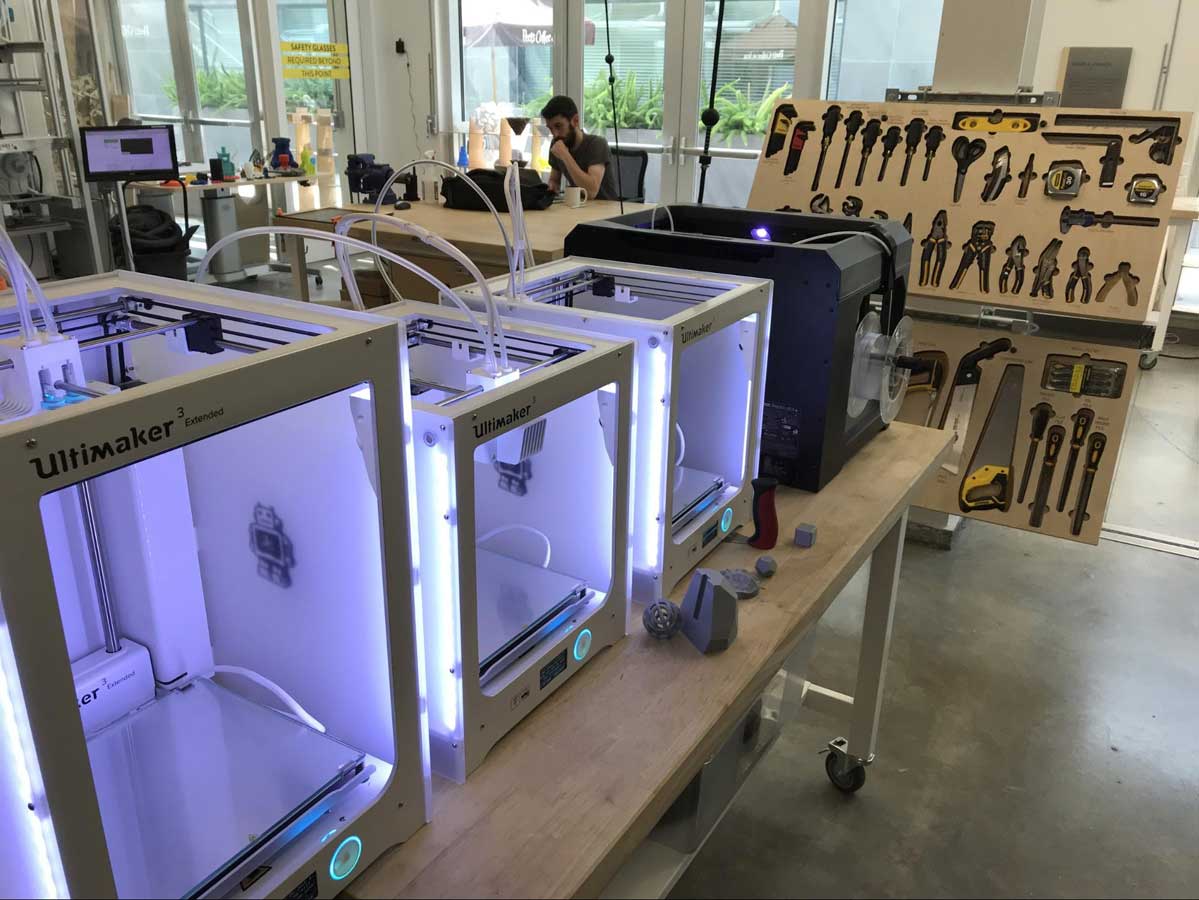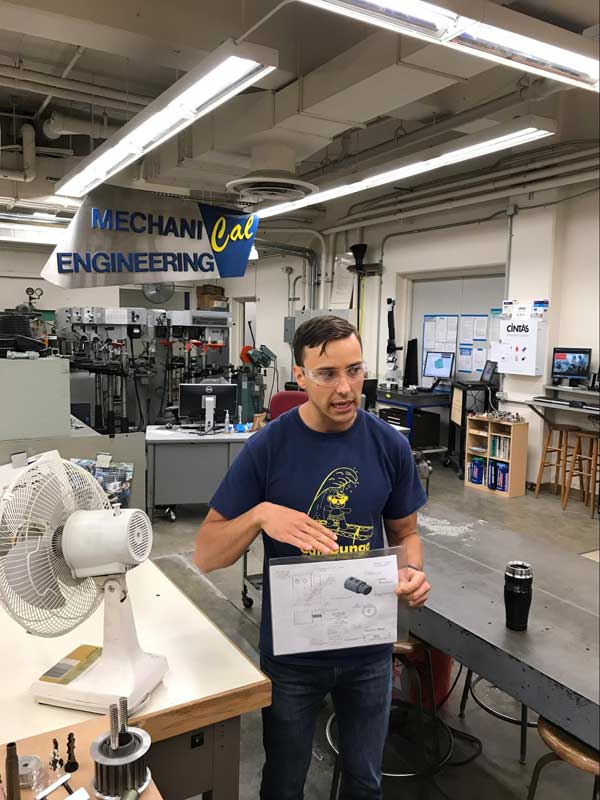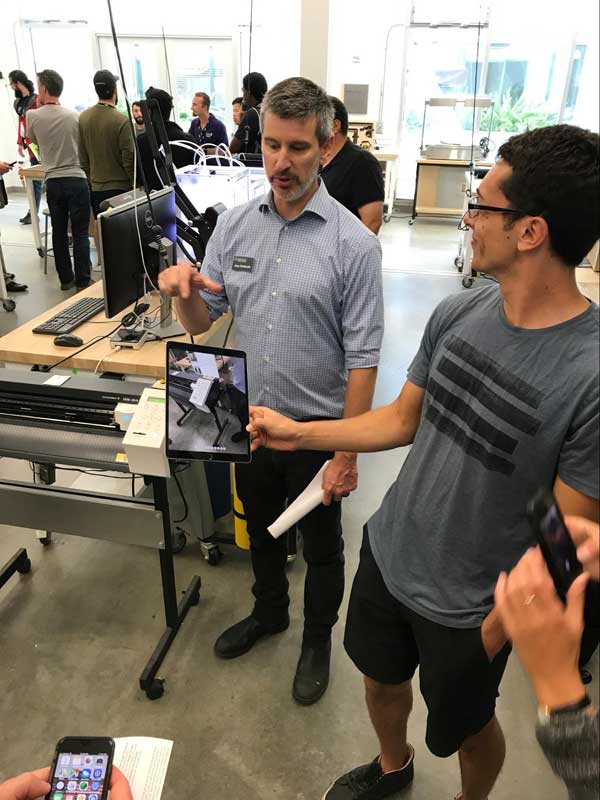Ideas from the world’s leading makerspaces
I recently had the opportunity to visit Stanford University for the International Symposium on Academic Makerspaces (ISAM). This was the third annual symposium dedicated to everything makerspace-related and helping to “foster community, networking, interaction and learning between people who are passionate about making.” Working at SolidProfessor and being a part of our vibrant academic community for over 10 years, I consider myself fairly informed when it comes to the maker movement but I learned at ISAM just how powerful a makerspace can be for students in their learning and exploration on campus. I was very impressed by the attendees’ dedication to their school’s makerspaces, and by the popularity of these makerspaces at their respective campuses.
What is a makerspace? What can a makerspace become?
Simply, a makerspace is a collaborative center or facility equipped with tools and technology to learn, design, and build with other makers. ISAM organized a field trip for attendees interested in exploring some makerspaces and projects in the Silicon Valley area. I jumped at the chance to attend the University of California, Berkeley makerspace: the Jacobs Institute for Design Innovation, a maker-marvel that opened in 2015. Jacobs is a four-story, 24,000 square foot, LEED Platinum Certified facility that includes precision manufacturing labs with 3D printers and other equipment, collaborative design studios, custom prototyping labs, a global ventures lab incubator, private and interactive workspaces, a student lounge, and exhibit space (with an atrium large enough to fly drones inside).
Joey Gottbrath, the Technical Lab Lead at Jacobs, led the facility tour and it was clear that one of the priorities for this makerspace was to provide easy access for students. This seemed to be working well for the institute as they currently see over 1,200 students per semester using the space. Joey explained that they have a variety of reservation systems, mobile and on-site apps, and communication tools to ensure the maker’s time in the space is productive. Three types of makerspace passes are available for students: Standard, Research, and Club Maker, which range from $40-225 per semester.

One question I was hoping to answer at ISAM is how the makerspace movement overlaps with traditional lab spaces that are typically provided by the engineering department. When trying to open up traditional lab environments to non-engineering students, many programs find they run into availability issues as well as safety concerns with more advanced equipment that untrained students may want to use. In this case, a makerspace is a perfect solution, especially as engineering students are increasingly collaborating with peers from other disciplines and using makerspace-exclusive resources. UC Berkeley has promoted this collaboration by building their makerspace next door to the engineering building and joining the two through the basement.

Another interesting component to the Jacobs Institute’s success (a theme throughout the ISAM conference) was how frequently they enlisted the help of students to develop programs and apps to use in the lab itself. A great example of this was an Augmented Reality (AR) application. When you hold it up to a piece of equipment within the lab, the app will overlay operational instructions on a tablet screen, helping to onboard new users and improve safety.

Makerspaces on a grand scale
Many schools presented during ISAM about their makerspaces, their learnings since opening, and the research validating the continued support of makerspaces in higher education. One of the featured makerspaces stood out as a unique example of how makerspaces are changing the world around us — from new product creation to starting companies.
Unternehmertum is a massive makerspace located outside of Munich, Germany. Its facility is open 7 days a week and offers 100 machines, over 16,000 square feet of usable makerspace, and additional office space available for startups and collaborations. It is Europe’s largest publicly accessible high-tech workshop. A key element to Unternehmertum’s success is offering “…founders and startups a complete service from the initial idea to IPO. A team of experienced entrepreneurs, scientists, managers and investors supports founders with the development of their products, services and business models. The experts accompany them actively with building up their companies, market entry and financing – also via Venture Capital.” Next time you’re in Munich, I’d recommend visiting this amazing makerspace, perhaps before the Hofbrauhaus! Their video tour will impress you.
The ISAM conference was a good example of how makerspaces have grown within the academic world and the message is clear: students love makerspaces! The value of student collaboration, cross-disciplinary exploration and experimentation, and building self-efficacy within the lab were championed by many schools. Many schools also communicated the significance of students becoming familiar with the tools available to them in the lab and makerspaces, which made a notable difference in student attendance throughout the year. Makerspaces continue to be hugely impactful in shaping the future of product design and innovation.
Naturally, eLearning goes hand-in-hand with makerspaces. Ivy Tech is a SolidProfessor member school using our eLearning materials in their courses and Labs. Check out some useful tips for creating a Fab Lab here.
























